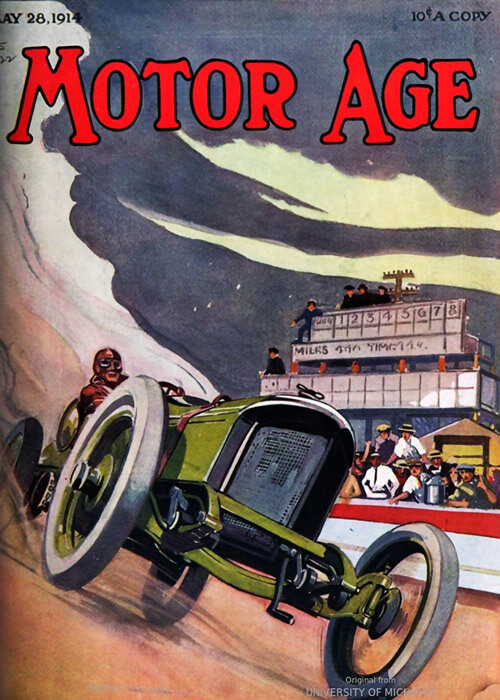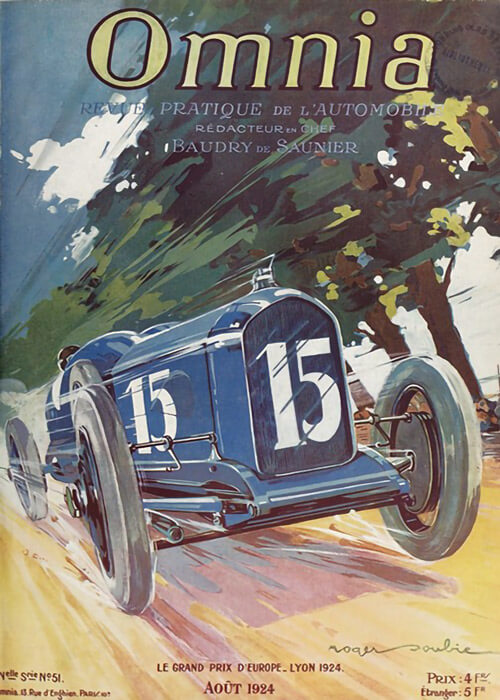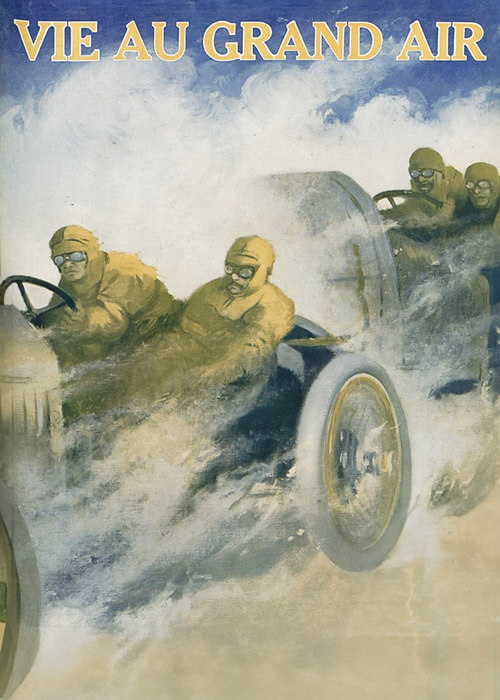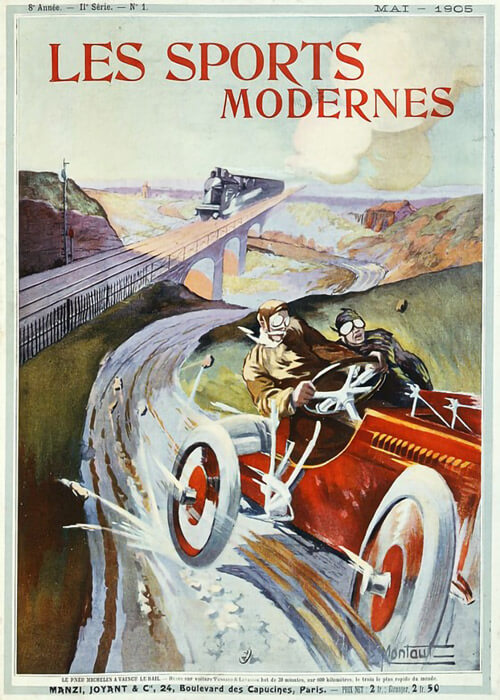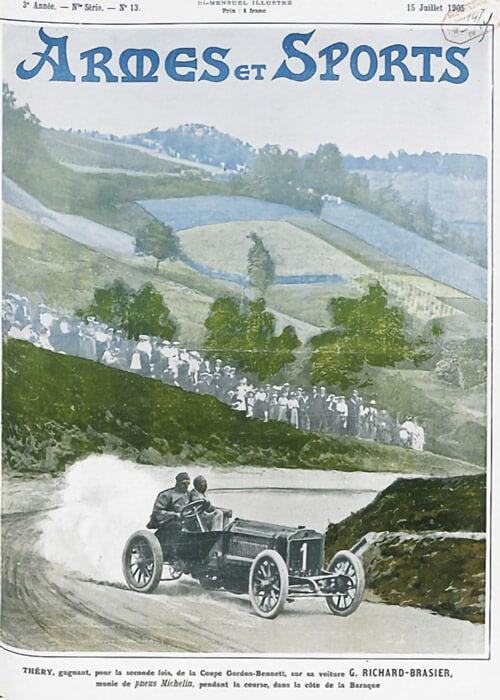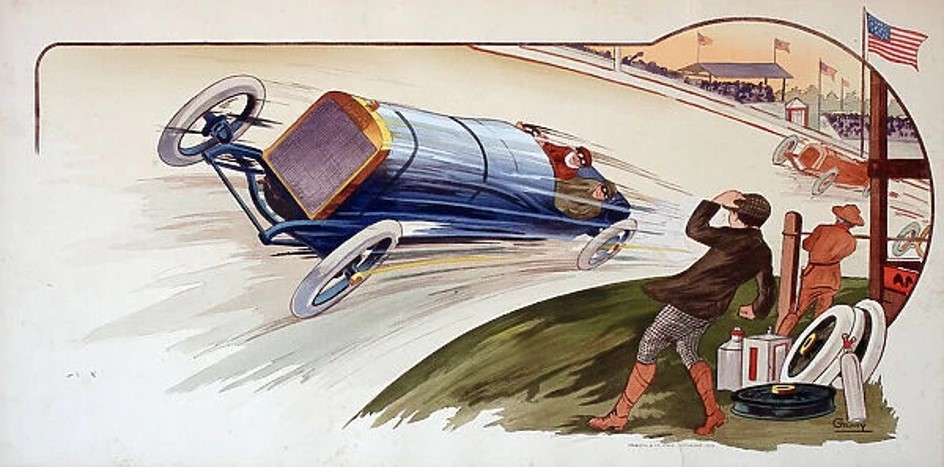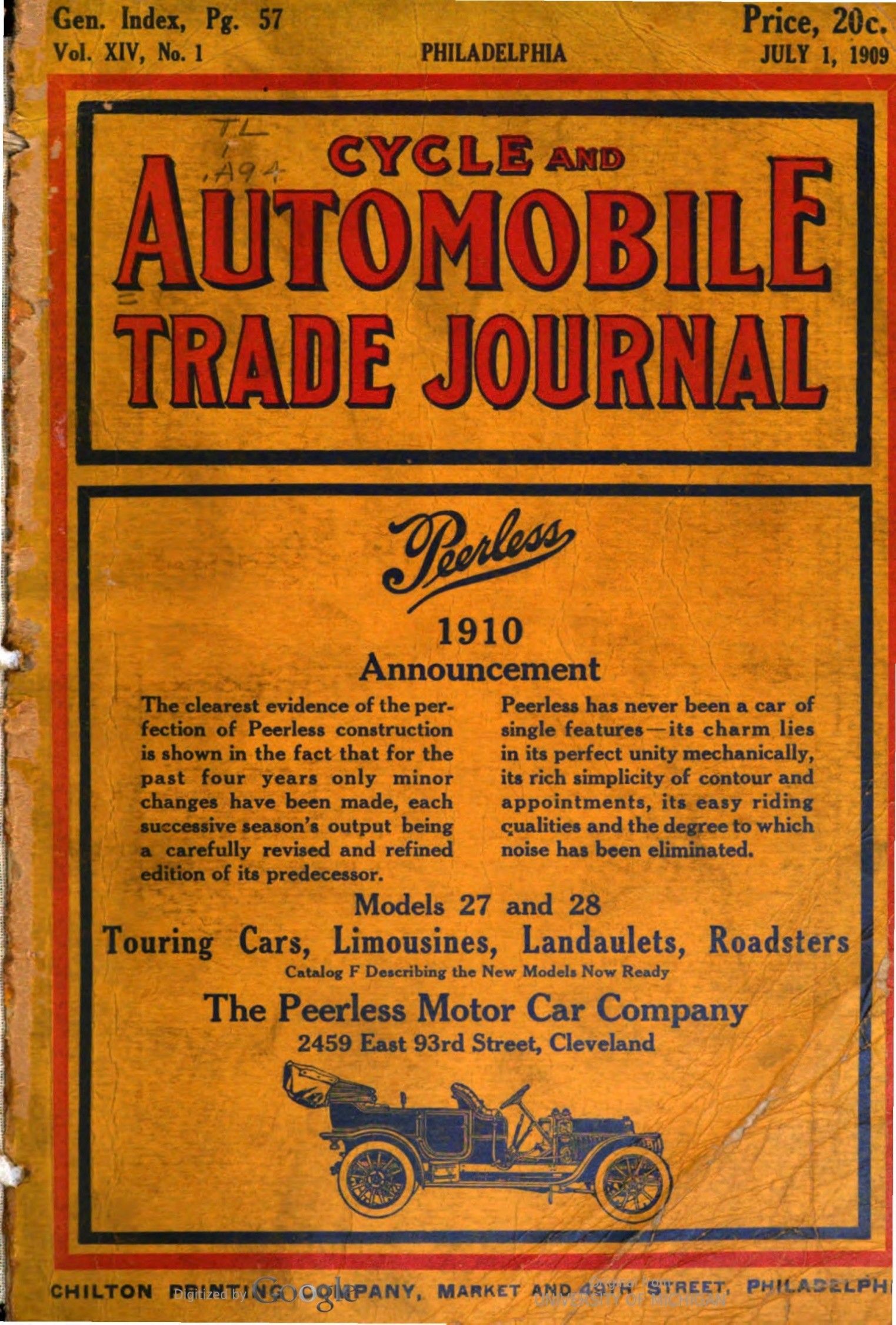
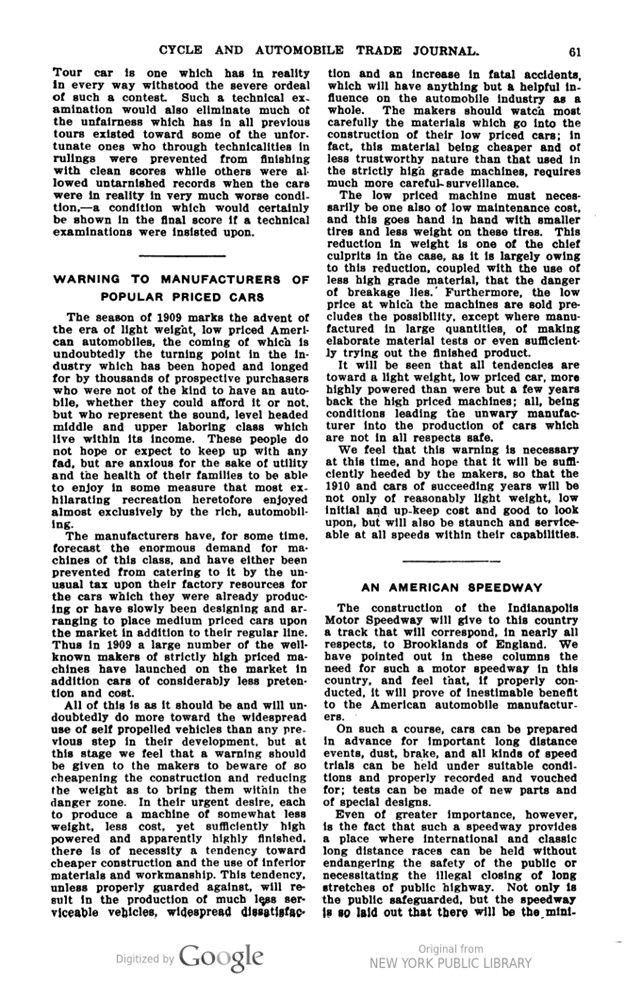

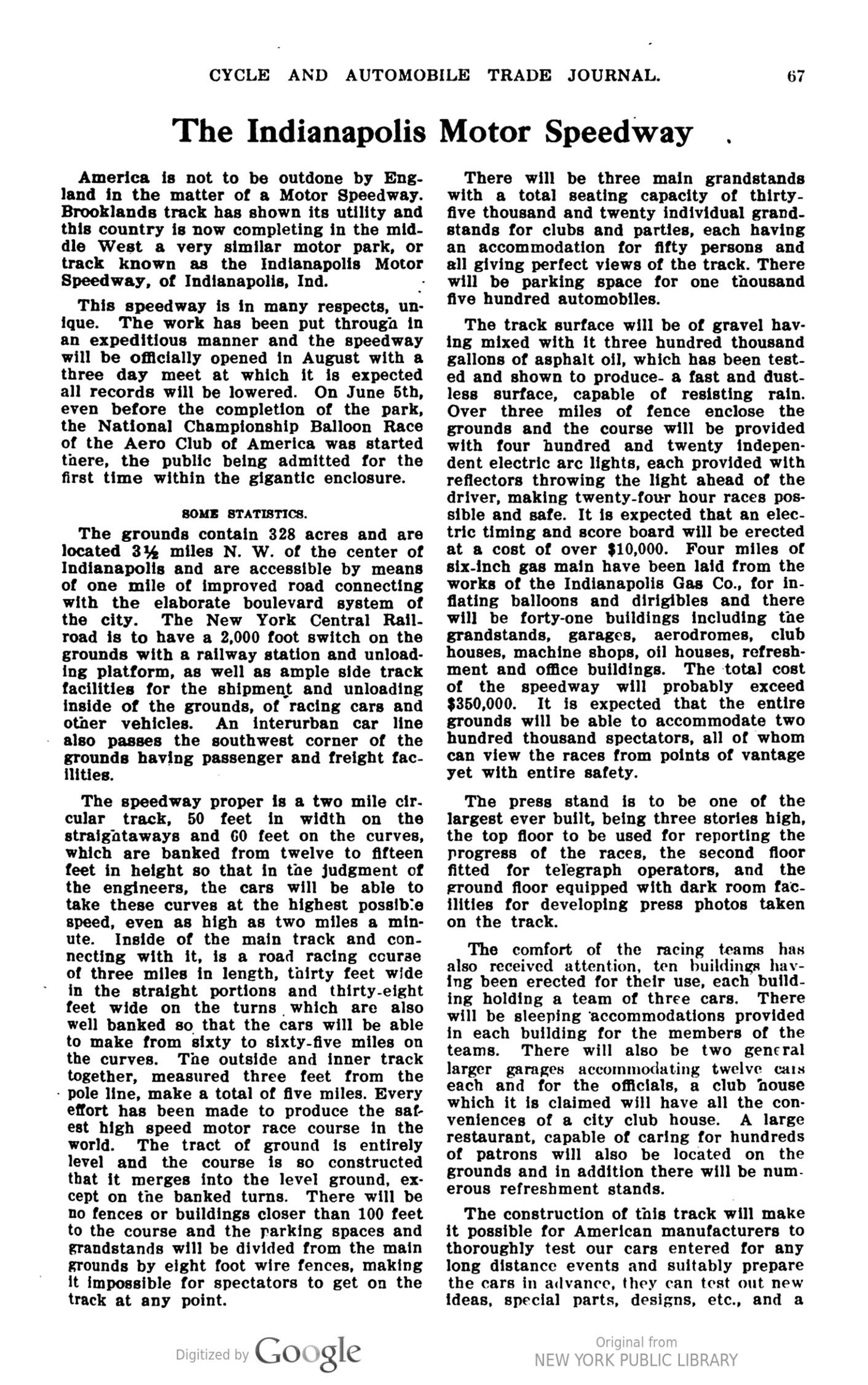
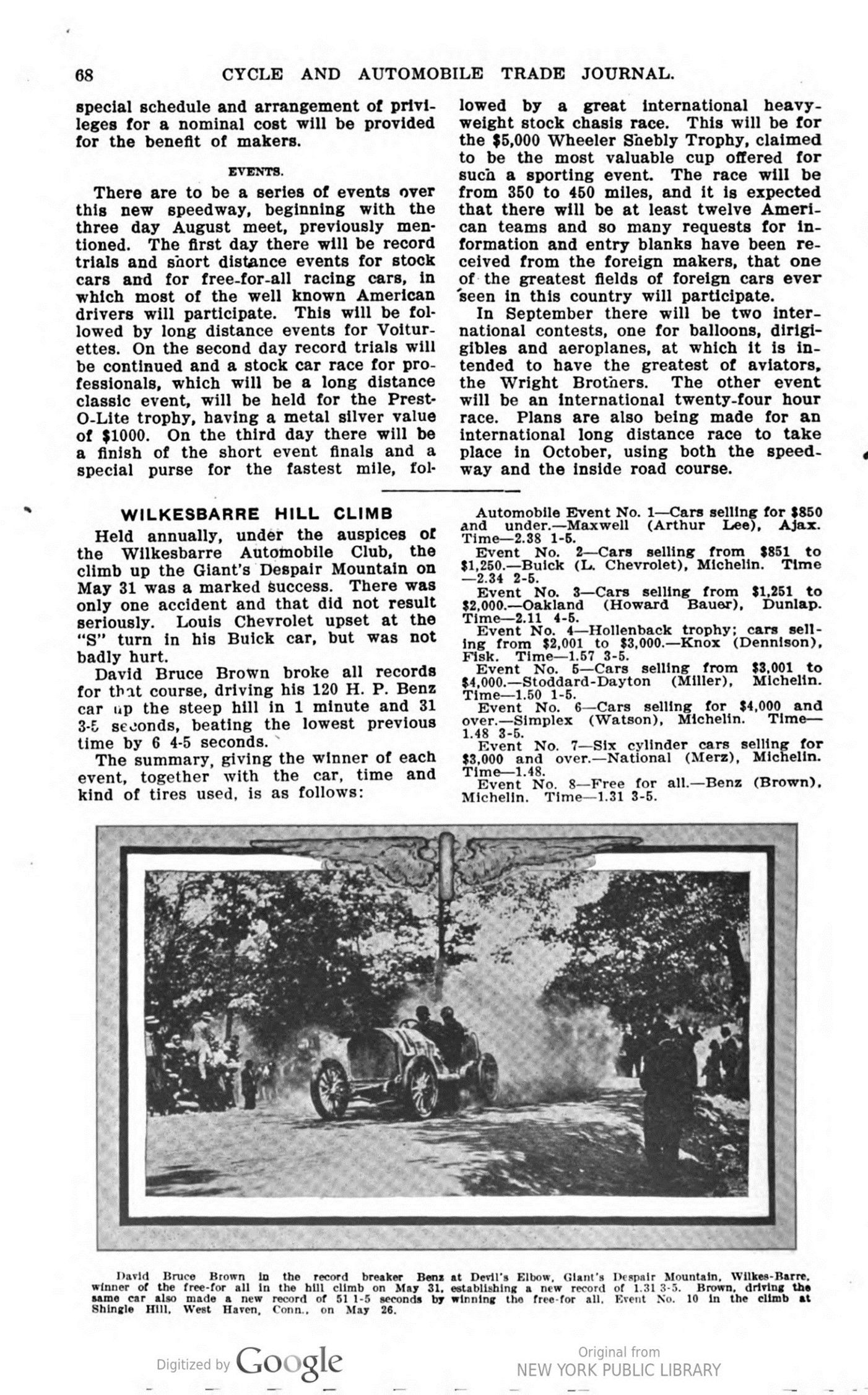
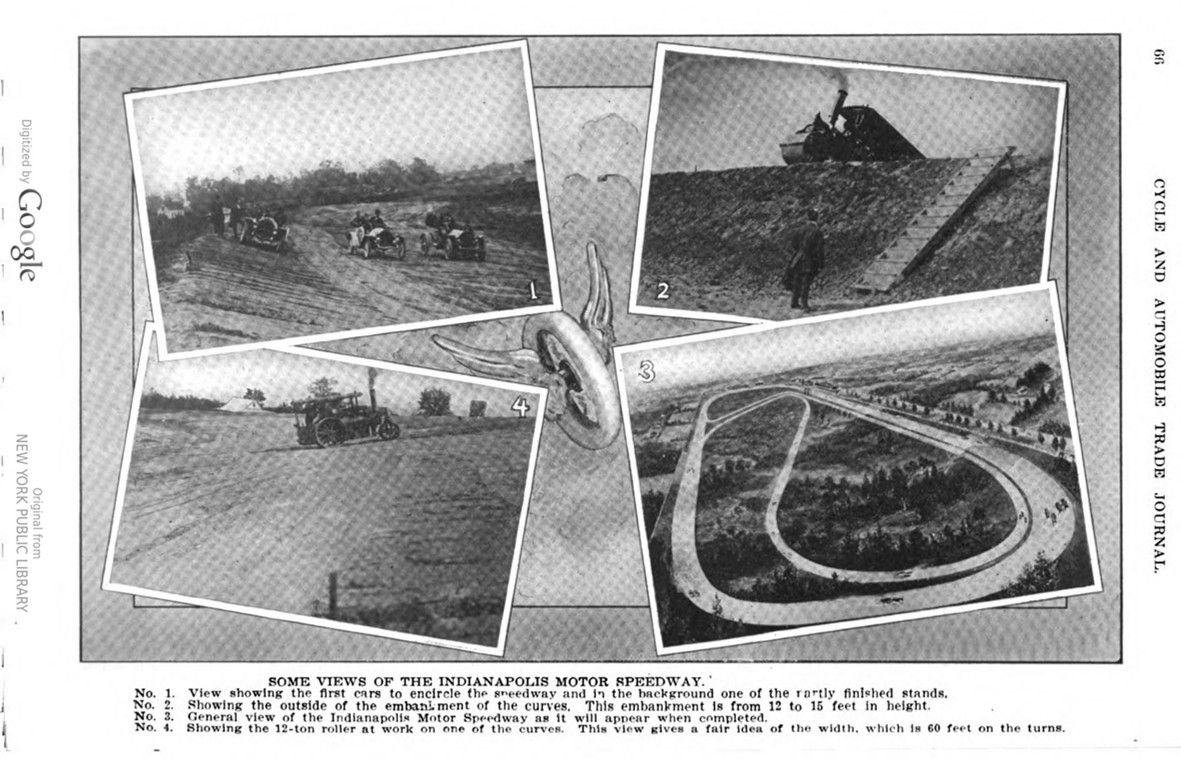
Text and jpegs by courtesy of hathitrust.org www.hathitrust.org, compiled by motorracinghistory.com
CYCLE AND AUTOMOBILE TRADE JOURNAL, Vol. XIV, No. 1, July 1, 1909
AN AMERICAN SPEEDWAY
The construction of the Indianapolis Motor Speedway will give to this country a track that will correspond, in nearly all respects, to Brooklands of England. We have pointed out in these columns the need for such a motor speedway in this country, and feel that, if properly conducted, it will prove of inestimable benefit to the American automobile manufacturers.
On such a course, cars can be prepared in advance for important long distance events, dust, brake, and all kinds of speed trials can be held under suitable conditions and properly recorded and vouched for; tests can be made of new parts and of special designs. Even of greater importance, however, is the fact that such a speedway provides a place where international and classic long distance races can be held without endangering the safety of the public or necessitating the illegal closing of long stretches of public highway. Not only is the public safeguarded, but the speedway is 80 laid out that there will be the minimum of danger even to the drivers themselves. The curves are of large radius and banked so that they can be taken at the highest possible speeds and the inner edge of the course merges into a level infield without fences, so that, except at the turns, there will be practically no danger to the driver in case the car should leave the course.
The advantages of such a track are numerous, not only as to the safety guaranteed the public, but owing to the fact that it does away with the tremendous expense necessitated in the preparation of roads for long distance events, and for the repair of the roads after such a race has been held. The cost of maintaining such a speedway course in excellent condition will be extremely small comparatively, as it will be used only for automobiles and will be under the constant and watchful attention of a corps of workmen under the supervision of a competent road engineer, while the average road is allowed to be washed out and become almost impassable at points before any steps are taken to repair the damage.
From the spectacular point of view such a course is far ahead of any road circuit, as the contestants will be in view during the entire race and the cars started, several of them at once, owing to width of the course, thus giving a race in which the progress of the cars and their relative positions can be followed by the spectators instead of having to figure elapsed time to determine which are in reality ahead.
This speedway is in all probability a forerunner of several of its kind in this country. It is hardly to be expected that the East, with its mass of population, will allow the progressive middle West to attract to it all the important long distance classic events.
THE INDIANAPOLIS MOTOR SPEEDWAY
America is not to be outdone by Eng land in the matter of a Motor Speedway. Brooklands track has shown its utility and this country is now completing in the middle West a very similar motor park, or track known as the Indianapolis Motor Speedway, of Indianapolis, Ind.
This speedway is in many respects, unique. The work has been put through in an expeditious manner and the speedway will be officially opened in August with a three day meet at which it is expected all records will be lowered. On June 5th, even before the completion of the park, the National Championship Balloon Race of the Aero Club of America was started there, the public being admitted for the first time within the gigantic enclosure.
SOME STATISTICS.
The grounds contain 328 acres and are located 342 miles N. W. of the center of Indianapolis and are accessible by means of one mile of improved road connecting with the elaborate boulevard system of the city. The New York Central Railroad is to have a 2,000 foot switch on the grounds with a railway station and unloading platform, as well as ample side track facilities for the shipment and unloading inside of the grounds, of racing cars and other vehicles. An interurban car line also passes the southwest corner of the grounds having passenger and freight facilities.
The speedway proper is a two mile circular track, 50 feet in width on the straightaways and 60 feet on the curves, which are banked from twelve to fifteen feet in height so that in the judgment of the engineers, the cars will be able to take these curves at the highest possible speed, even as high as two miles a minute. Inside of the main track and connecting with it, is a road racing course of three miles in length, thirty feet wide in the straight portions and thirty-eight feet wide on the turns which are also well banked so that the cars will be able to make from sixty to sixty-five miles on the curves. The outside and inner track together, measured three feet from the pole line, make a total of five miles. Every effort has been made to produce the safest high speed motor race course in the world. The tract of ground is entirely level and the course is so constructed that it merges into the level ground, except on the banked turns. There will be no fences or buildings closer than 100 feet to the course and the parking spaces and grandstands will be divided from the main grounds by eight foot wire fences, making it impossible for spectators to get on the track at any point.
There will be three main grandstands with a total seating capacity of thirty- five thousand and twenty individual grand- stands for clubs and parties, each having an accommodation for fifty persons and all giving perfect views of the track. There will be parking space for one thousand five hundred automobiles.
The track surface will be of gravel having mixed with it three hundred thousand gallons of asphalt oil, which has been test- ed and shown to produce – a fast and dust-less surface, capable of resisting rain. Over three miles of fence enclose the grounds and the course will be provided with four hundred and twenty independent electric arc lights, each provided with reflectors throwing the light ahead of the driver, making twenty-four hour races possible and safe. It is expected that an electric timing and score board will be erected at a cost of over $10,000. Four miles of six-inch gas main have been laid from the works of the Indianapolis Gas Co., for inflating balloons and dirigibles and there will be forty-one buildings including toe grandstands, garages, aerodromes, club houses, machine shops, oil houses, refreshment and office buildings. The total cost of the speedway will probably exceed $350,000. It is expected that the entire grounds will be able to accommodate two hundred thousand spectators, all of whom can view the races from points of vantage yet with entire safety.
The press stand is to be one of the largest ever built, being three stories high, the top floor to be used for reporting the progress of the races, the second floor fitted for telegraph operators, and the ground floor equipped with dark room facilities for developing press photos taken on the track.
The comfort of the racing teams has also received attention, ten buildings having been erected for their use, each building holding a team of three cars. There will be sleeping accommodations provided in each building for the members of the teams. There will also be two general larger garages accommodating twelve cars each and for the officials, a club mouse which it is claimed will have all the conveniences of a city club house. A large restaurant, capable of caring for hundreds of patrons will also be located on the grounds and in addition there will be numerous refreshment stands.
The construction of this track will make it possible for American manufacturers to thoroughly test our cars entered for any long distance events and suitably prepare the cars in advance, they can test out new ideas, special parts, designs, etc., and a special schedule and arrangement of privileges for a nominal cost will be provided for the benefit of makers.
EVENTS.
There are to be a series of events over this new speedway, beginning with the three day August meet, previously mentioned. The first day there will be record trials and short distance events for stock cars and for free-for-all racing cars, in which most of the well known American drivers will participate. This will be followed by long distance events for Voiturettes. On the second day record trials will be continued and a stock car race for professionals, which will be a long distance classic event, will be held for the Prest-O-Lite trophy, having a metal silver value of $1000. On the third day there will be a finish of the short event finals and a special purse for the fastest mile, followed by a great international heavy- weight stock chasis race. This will be for the $5,000 Wheeler Snebly Trophy, claimed to be the most valuable cup offered for such a sporting event. The race will be from 350 to 450 miles, and it is expected that there will be at least twelve Ameri- can teams and so many requests for in- formation and entry blanks have been received from the foreign makers, that one of the greatest fields of foreign cars ever ’seen in this country will participate.
In September there will be two inter- national contests, one for balloons, dirigibles and aeroplanes, at which it is in- tended to have the greatest of aviators, the Wright Brothers. The other event will be an international twenty-four hour race. Plans are also being made for an international long distance race to take place in October, using both the speed- way and the inside road course.
SOME VIEWS OF THE INDIANAPOLIS MOTOR SPEEDWAY.
No. 1. View showing the first cars to encircle the speedway and in the background one of the barely finished stands.
No. 2. Showing the outside of the embankment of the curves. This embankment is from 12 to 15 feet in height.
No. 3. General view of the Indianapolis Motor Speedway as it will appear when completed.
No. 4. Showing the 12-ton roller at work on one of the curves. This view gives a fair idea of the width, which is 60 feet on the turns.
